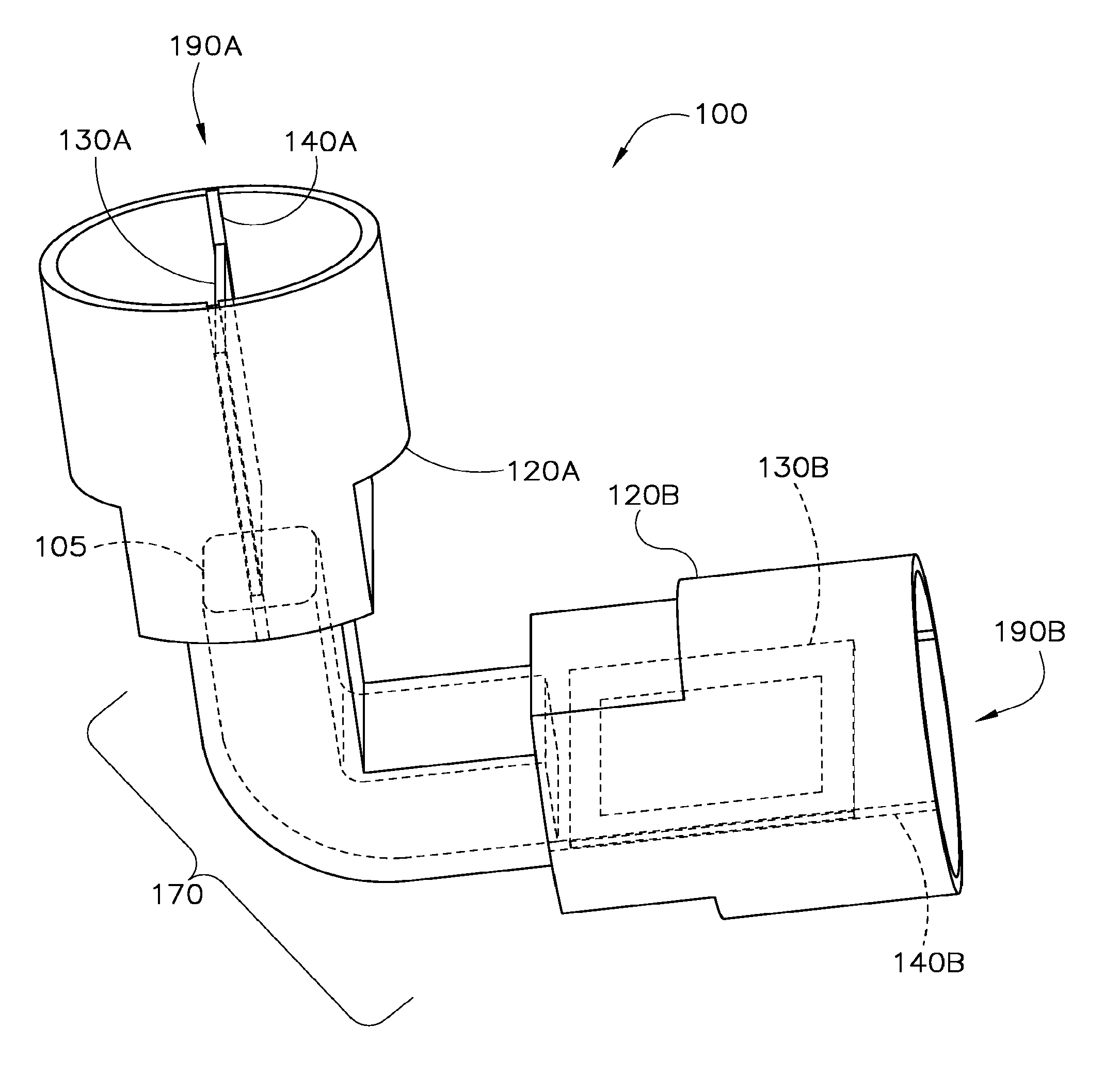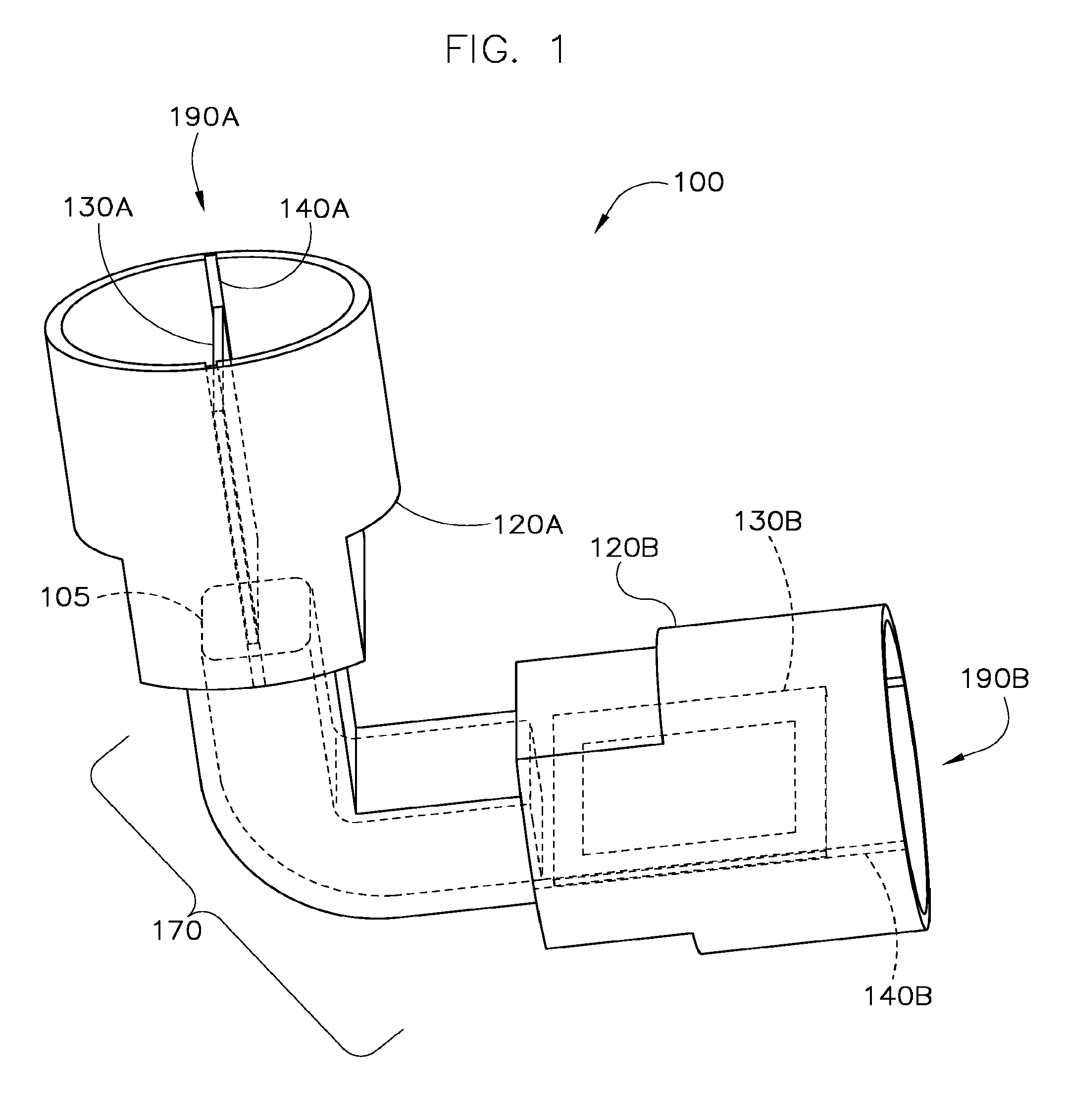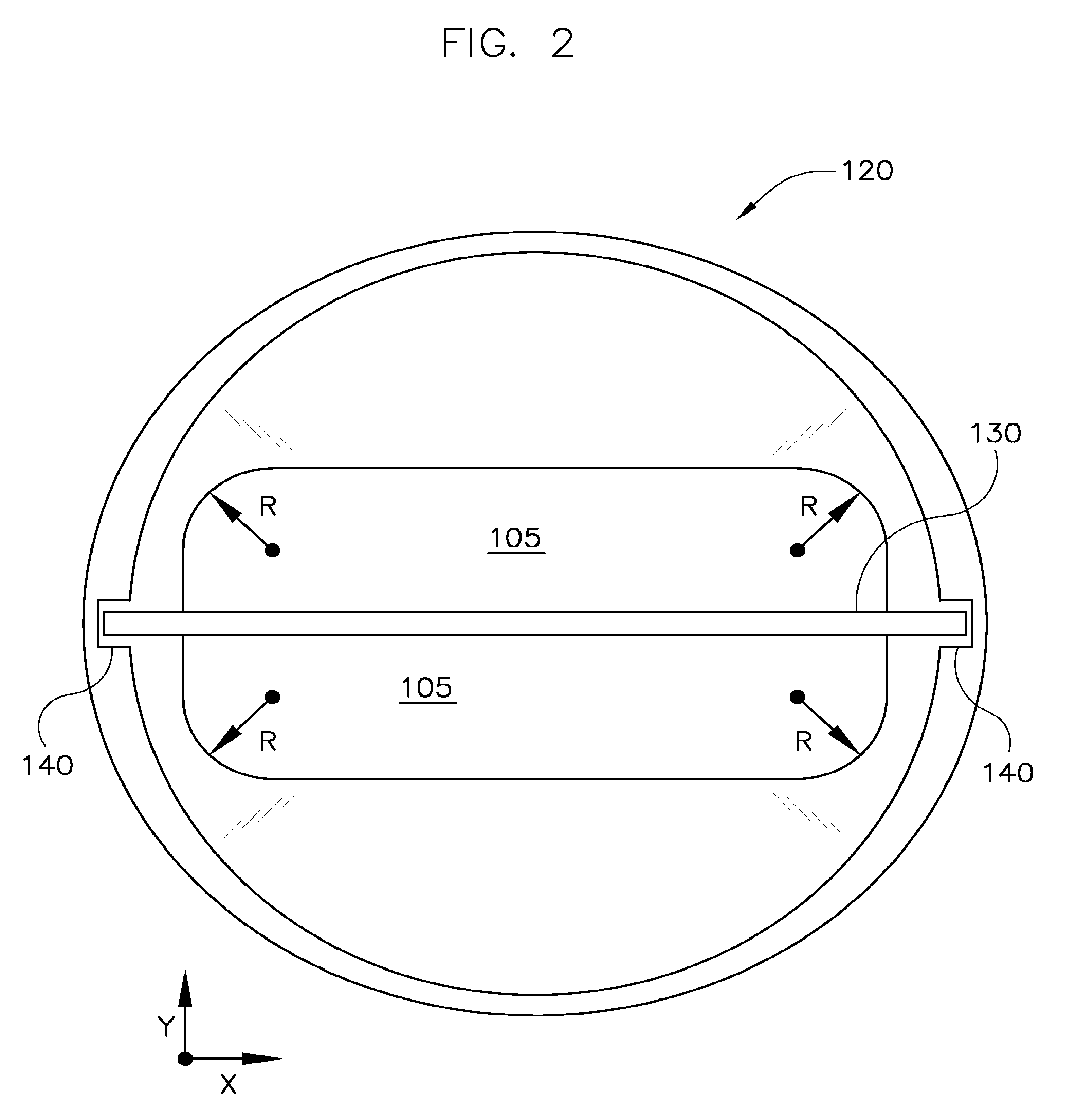Circular to rectangular waveguide converter including a bend section and mode suppressor
a waveguide converter and rectangular technology, applied in the field of circular waveguides, can solve the problems of reducing the desired signal, introducing problems for circular waveguides, and general complex manufacture of bent waveguides, and achieves excellent rf propagation/loss performance, substantially flat frequency response, and avoid excessive interaction
- Summary
- Abstract
- Description
- Claims
- Application Information
AI Technical Summary
Benefits of technology
Problems solved by technology
Method used
Image
Examples
Embodiment Construction
[0019]The invention can include various embodiments, examples of which are described below. One exemplary embodiment can include an E-plane bend between two circular waveguides. Another exemplary embodiment can include an H-plane bend between one circular waveguide and one rectangular wave guide. Other exemplary embodiment can include an E-plane bend between one circular waveguide and one rectangular wave guide as well as a non-bent adapter for coupling a circular waveguide to a traditional rectangular waveguide. Other combinations of straight adapters, E-bends, and H-bends with circular, rectangular, or other waveguide interfaces are not beyond the scope or spirit of the invention.
[0020]Turning now to the drawings, in which like reference numerals refer to like elements, FIG. 1 illustrates a circular waveguide E-bend supporting the interconnection of two circular waveguides according to one exemplary embodiment of the invention. A first circular waveguide (not illustrated) can be c...
PUM
 Login to view more
Login to view more Abstract
Description
Claims
Application Information
 Login to view more
Login to view more - R&D Engineer
- R&D Manager
- IP Professional
- Industry Leading Data Capabilities
- Powerful AI technology
- Patent DNA Extraction
Browse by: Latest US Patents, China's latest patents, Technical Efficacy Thesaurus, Application Domain, Technology Topic.
© 2024 PatSnap. All rights reserved.Legal|Privacy policy|Modern Slavery Act Transparency Statement|Sitemap



